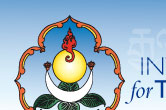THIRD YEAR - Course Outline
Diagnosis in Traditional Tibetan Medicine
This ancient, natural and gentle diagnostic system comprises three diagnostic methods:
- Inspection (Tib. lTa ba) - which means to watch, to observe
- Palpation (Tib. Reg pa) - which means to touch
- Case History (Tib. Dri ba) - which means to ask questions, to take a history
Inspection (Tib. lTa ba)
- The form and contour of the body
- The complexion
- The sense organs, especially the characteristics of the tongue
- The urine, which is considered to be the most important factor in diagnosis
Inspection of the Sense Organs:
- Tongue
- Eyes
- Ears
- Nose
- Lips, skin and nails
Urine Analysis According to Traditional Tibetan Medicine
- The origins of the practice of urine analysis
- Rules for inspecting the urine correctly
- The nine aspects to note when observing the urine:
Four elements should be noted while the urine is still warm
- colour
- vapour
- odour
- bubbles
Two aspects should be observed during the cooling phase
- sediment
- oil, surface colour and texture
When the urine cools, the colour-change should be note
- the time it takes for the change of colour between hot and cold
- also the way in which the colour changes
- and the final colour of urine once it is completely cold
Palpation (Tib. Reg pa)
- Pulse Diagnosis
- Tender Points
Pulse Diagnosis
Pulse reading is a very important and complex method of diagnosis. It is extensively practised in most of the oriental traditional medicines, however it must be noted that the art of Tibetan pulse reading is different from that of other medicines. Therefore, in order to avoid confusion, when we study pulse reading according to Tibetan Medicine, we should not compare this to other systems of pulse reading.
There are two major aspects to Pulse Diagnosis:
- Pulse reading for typology
- Pulse reading for pathology
Study of Pulse Diagnosis will include:
- The history of Tibetan pulse diagnosis
- The techniques of Tibetan pulse diagnosis
- The ideal time for pulse reading
- The position of the fingers
- Correspondence between the pulse positions and the organs
- The rules for correct interpretation
- Microcosm and macrocosm
- The influence of the seasons on the pulses
- Five elements and five energies
- Distinguishing between Hot and Cold conditions
- Distinctions between recent and chronic conditions of Heat and Cold
- Pulses which identify an imbalance of one or more of the humours
Tender Points
Rek Pa also refers to checking specific points in order to identify painful areas, which indicate where the illness is located. Palpating each painful point establishes a connection with the related organs; in particular the points along the vertebrae and on the head.
Case History or Interview (Tib. Dri Ba)
This is the process of collecting information: how to question and listen to the patient in order to identify signs and symptoms; knowing about diet and behaviour in order to understand what the possible causes of the disturbance or illness may be.
Three main points to clarify:
- Current symptoms
- The cause of the symptoms
- The patient's reaction to certain foods and behaviours
Treatments in Traditional Tibetan Medicine
Tibetan pharmacology
History of Tibetan pharmacology
- 25 wound-healing substances
- 8 functions of medicines
Principles of Natural Medicine.
- Taste
- Post-Digestive Taste
The Eight Potencies of Medicines:
- Heavy
- Oily
- Cool
- Blunt
- Light
- Coarse
- Hot
- Sharp
These Medical studies are according to the Second Tantra of the rGyud bZhi:
Specific Sections:
- ‘Precious Medicines’ – medicinal properties of precious substances - 10 types
- ‘Stone medicines’ – medicinal properties of minerals - 33 types
- Earth medicines – 10 types
- Tree medicines – 4 types
- Resin medicines - 89 types
- Plant medicines
- Herbs - 120
- Animal products -90
Specific Tibetan Medicine studies:
- Herbs
- Minerals
- Metals
- Animal products
Study of the above Medicines will be according to Taste, Potency, Function as well as Medicinal Compounding.
TTM pharmacopea
Study of 100 specific commonly-used formulas of Tibetan Medicine
External Therapies in Traditional Tibetan Medicine
- Study of channels, chakras and points
- Point location and function
- Movement of subtle energies in the body
- Subtle energies, astrological influences and their relationship to external therapies
- Moxibustion
- Study of moxibustion points
- Ten types of moxibustion
- Bloodletting
- The 77 blood-letting points
- Cupping – authentic Tibetan traditional cupping
- Use of Tibetan copper cups
- 3 types of Cupping
- Ku Nye – Traditional Tibetan Massage
- The Three stages of Ku Nye:
- Ku – application of herbal oils
- Nye – massage of muscles, tendons, channels and specific points
- Phyis – therapeutic techniques for removing oils from the skin
- Yuk Cho - Stick therapy
- Lums – Herbal bath therapy
- Chu yi Trulkhor - Cold water hydrotherapies
Tshawa Studies
According to TTM, there is a specific group of pathologies encompassing fevers, infections and inflammation. Tshawa conditions have the ability to spread rapidly and can be life-threatening, therefore Tshawa studies hold an important place in the study of pathology.
|


